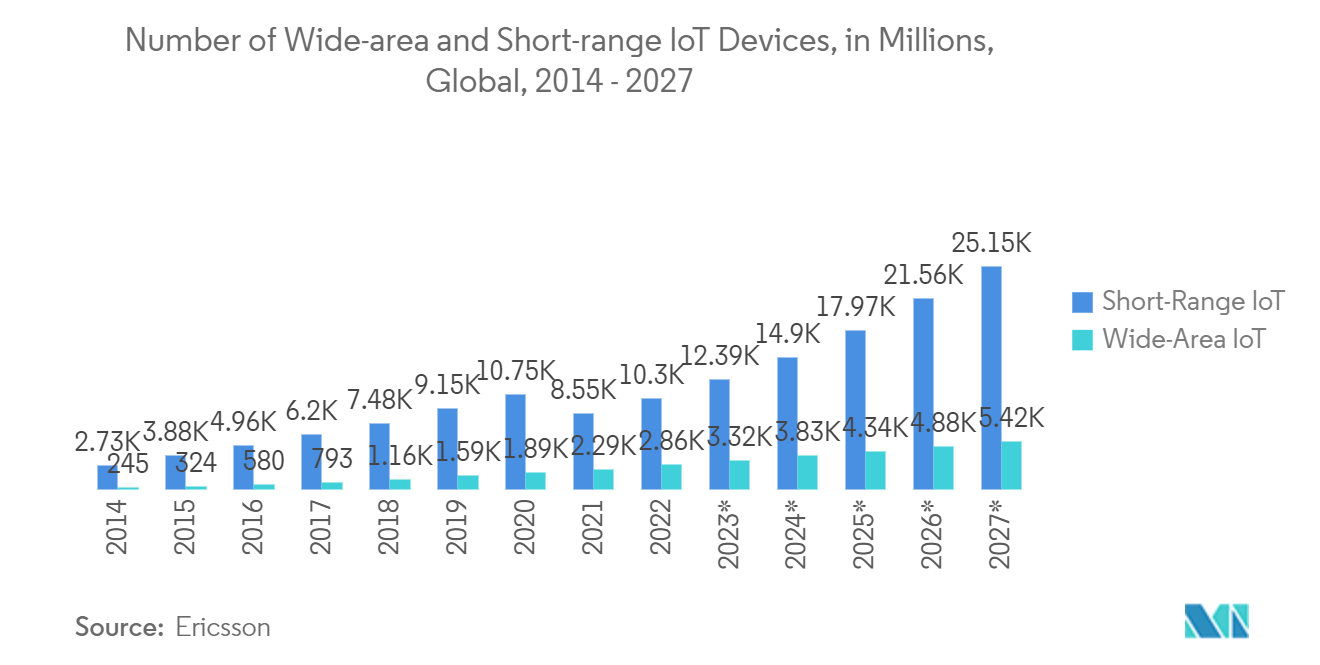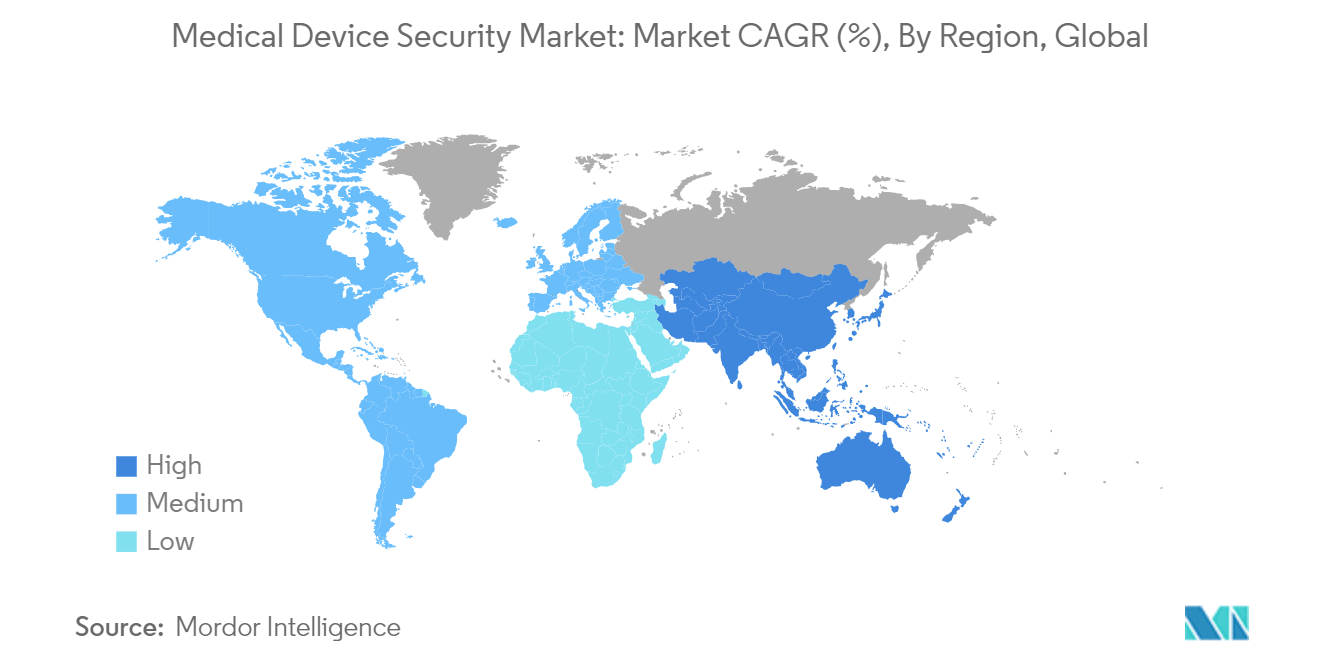Market Trends of Medical Device Security Industry
Increasing Demand for Connected Medical Devices is Expected to Drive the Market Growth
- The healthcare sector has adopted new technologies, such as smart wearables and remote monitoring equipment embedded with IoT-enabled technologies, to offer life-critical services and treatments. Healthcare services are moving online to capture patient data for better health services. These wearable medical devices are gaining immense popularity due to improved technologies and their compatibility with regularly used instruments, such as smartphones. Health awareness promotes the growth and use of these smart wearables to monitor health and fitness conditions.
- As cyberattack cases continue to rise, the security of connected medical devices is becoming challenging. With more medical devices integrated into clinical networks, real-time connected medical device utilization data adds greater accuracy to emergency preparedness and capital planning initiatives across hospitals and health systems.
- In August 2023, Medcrypt Inc., the proactive cybersecurity solution provider for medical device manufacturers (MDMs), partnered with Netrise, the company offering granular visibility into the world's XIoT security problem to solve critical cybersecurity challenges in the healthcare industry. This collaboration would offer the MDMs a Software Bill of Materials (SBOM) lifecycle management solution that would enable device manufacturers to proactively identify and address the potential security risks and ensure the safety and integrity of their medical devices.
- The increasing proliferation of connected Internet of Things (IoT) devices in the healthcare sector drives the growth of the medical device security market. According to Ericsson, in 2022, the number of short-range Internet of Things (IoT) devices reached 10.3 billion globally. That number is expected to increase to 25 billion by 2027. The wide-area IoT devices would be about 2.9 billion in 2021 and are forecasted to reach 5.4 billion by 2027.

North America is Expected to Hold Significant Market Share
- Healthcare is one of North America's most regulated industries due to privacy and security concerns associated with digital patient records. Regulations, such as the Health Insurance Portability and Accountability Act (HIPAA) and the Health Information Technology for Economic and Clinical Health (HITECH) Act, ensure a steady growth in the penetration rates of cyber security solutions in the country's healthcare sector.
- The United States and Canada have developed economies that enable them to invest heavily in R&D. Rising digitization throughout the industrial emphasis areas, steady technological advancements, and rising penetration of smart connected devices have all contributed to the growth of the North American IoT device market. The increased usage of connected devices and associated network infrastructure, as well as the increased collaboration of network, hardware, and software providers, are the primary drivers that assist in expanding the IoT market in North America.
- The proliferation of IoT medical devices demands threat-prevention methods. In June 2023, the US-based medical device cybersecurity organization MedCrypt partnered with Stratigos Security to provide security assessments and penetration testing, offering a suite of third-party assessment and advisory services.
- In November 2023, NYU Langone Health partnered with Philips to adopt new health technology solutions in patient safety, quality, and outcomes. The new collaboration to unlock patient data for precision diagnosis and treatment includes digital pathology, clinical informatics, and innovative AI-enabled diagnostics with enterprise monitoring as a service model.


